Neat RatingMixer RatingOverall Rating:
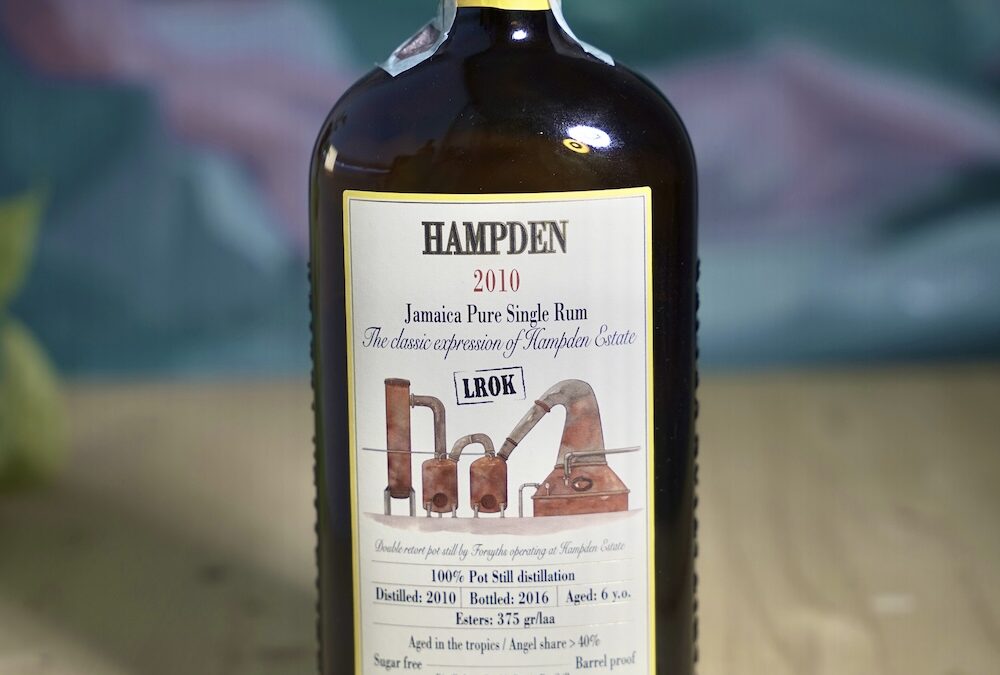
Habitation Velier Hampden 2010 LROK
Habitation Velier Hampden 2010 LROK
Neat Rating
Mixer Rating
Minimum Age
ABV
Volume
Refractometer
Price Acquired
Overall Rating:

Neat Rating
Mixer Rating
Overall Rating:
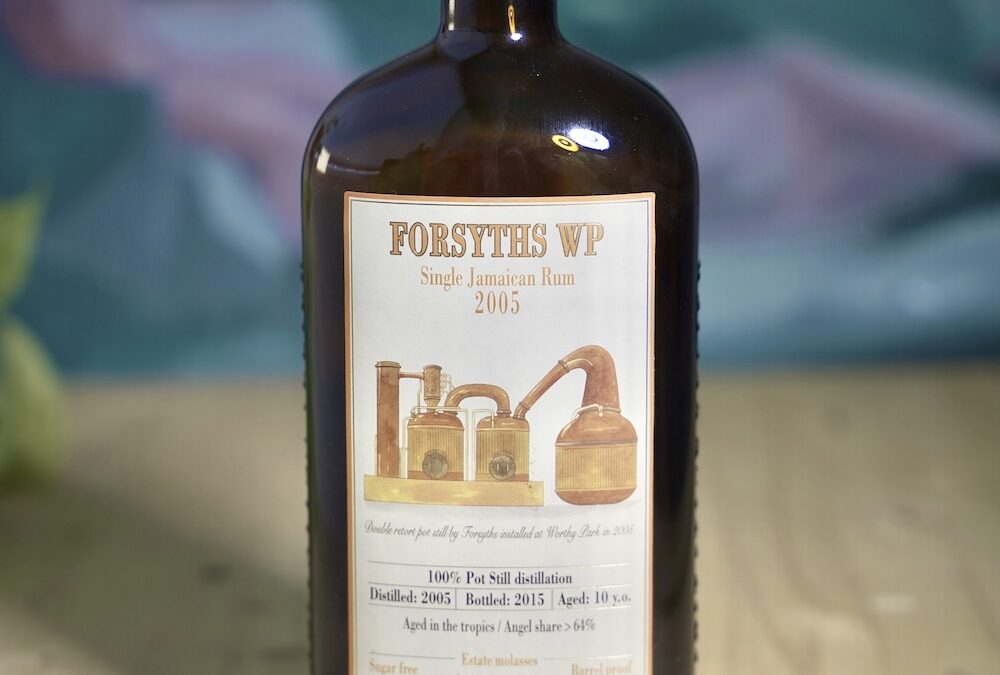
Neat Rating
Mixer Rating
Overall Rating:

Neat Rating
Mixer Rating
Overall Rating:
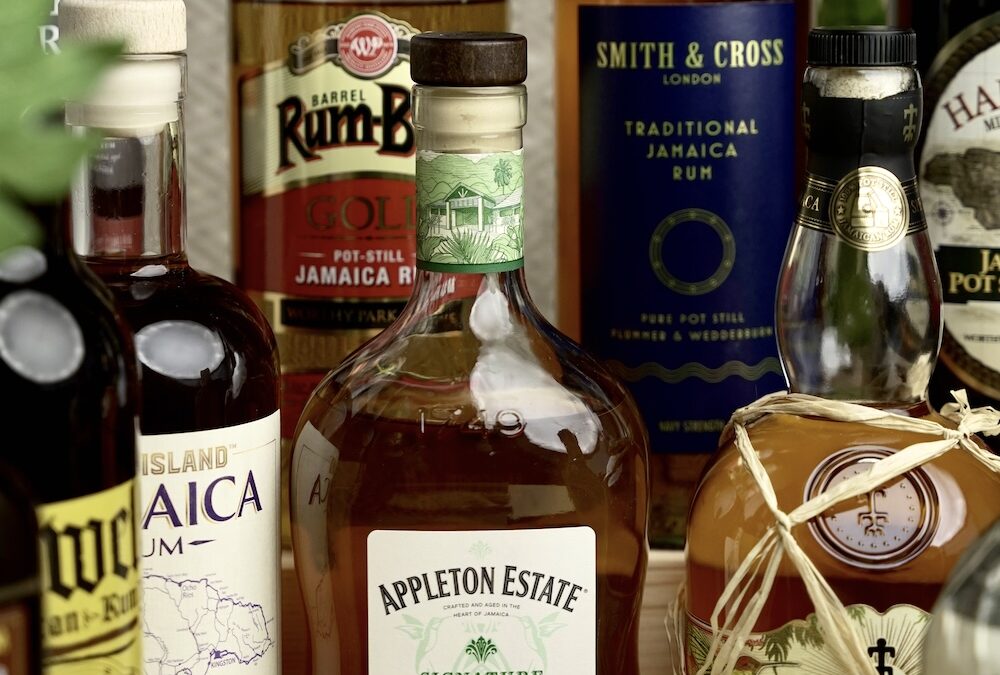
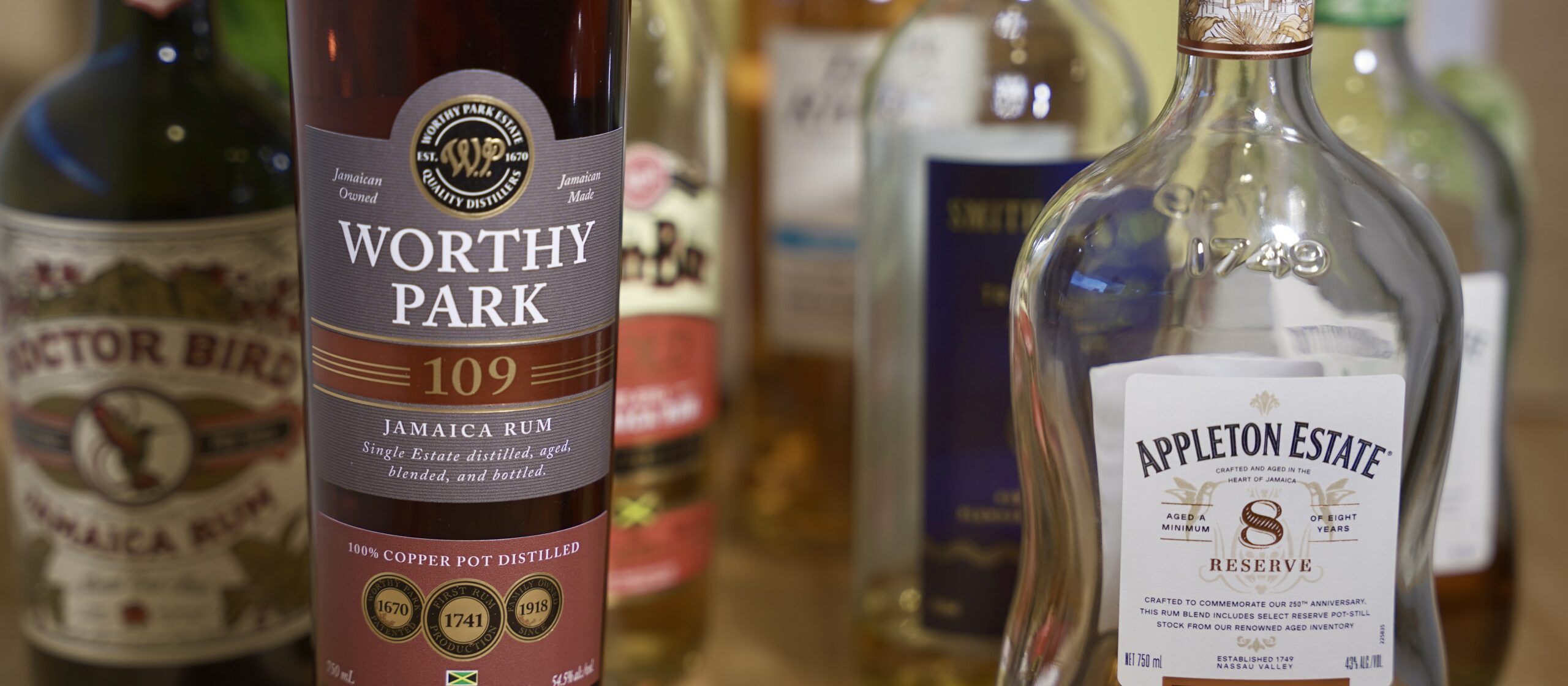
There may be no rum origin more quintessential than Jamaica. Known for the fresh, fruity and funky flavors produced by long fermentations and pot still distillation, Jamaican rum holds a special place in many spirit enthusiasts’ hearts, including my own. In fact, the plurality of rum in my liquor cabinet is from Jamaica. There’s something about the complex, ester forward profile that makes many Jamaican rums not only indispensable cocktail ingredients, but also compelling tipples to be sipped neat.
While there are a number of limited run vintage bottlings that are easy to swoon over, (Appleton Hearts, Hampden Great House, Jamaican installments of Habitation Velier, I could go on) here I was interested in lining up all the standard release aged Jamaican rums I could get my hands on, and seeing how they stack up. Specifically, I limited myself to rums that have some, but no more than 8 years of age. Functionally this excluded Appleton 12, 15 and 21, but not much else.
You can read more about our review system here, but the general idea is that we (my partner and I) tasted all of these rums blind, both neat in a Glencairn, then mixed as a daiquiri. We recorded tasting notes and ratings without knowing what the rum was, then later I rated each expression on its presentation (a nice looking bottle isn’t everything, but it certainly is, well, nice) and transparency, culminating in an unblind review where I get to consider all these factors, as well as how the rum stacks up to the field. The final ranking is determined by an average of the blind neat rating, blind mixed rating, presentation, transparency, and the unblinded review. If that all sounds a bit convoluted, it is; but it’s fun : ) Without further ado, here are all the rums we tasted, in order:

This pot column blend from J. Wray & Nephew gave us strong notes molasses and chocolate, with hints of banana, grape, wood, brown sugar, and baking spice. We thought it was decent as a neat sipper (6.4/10) and pretty good as a mixer (7.5/10).
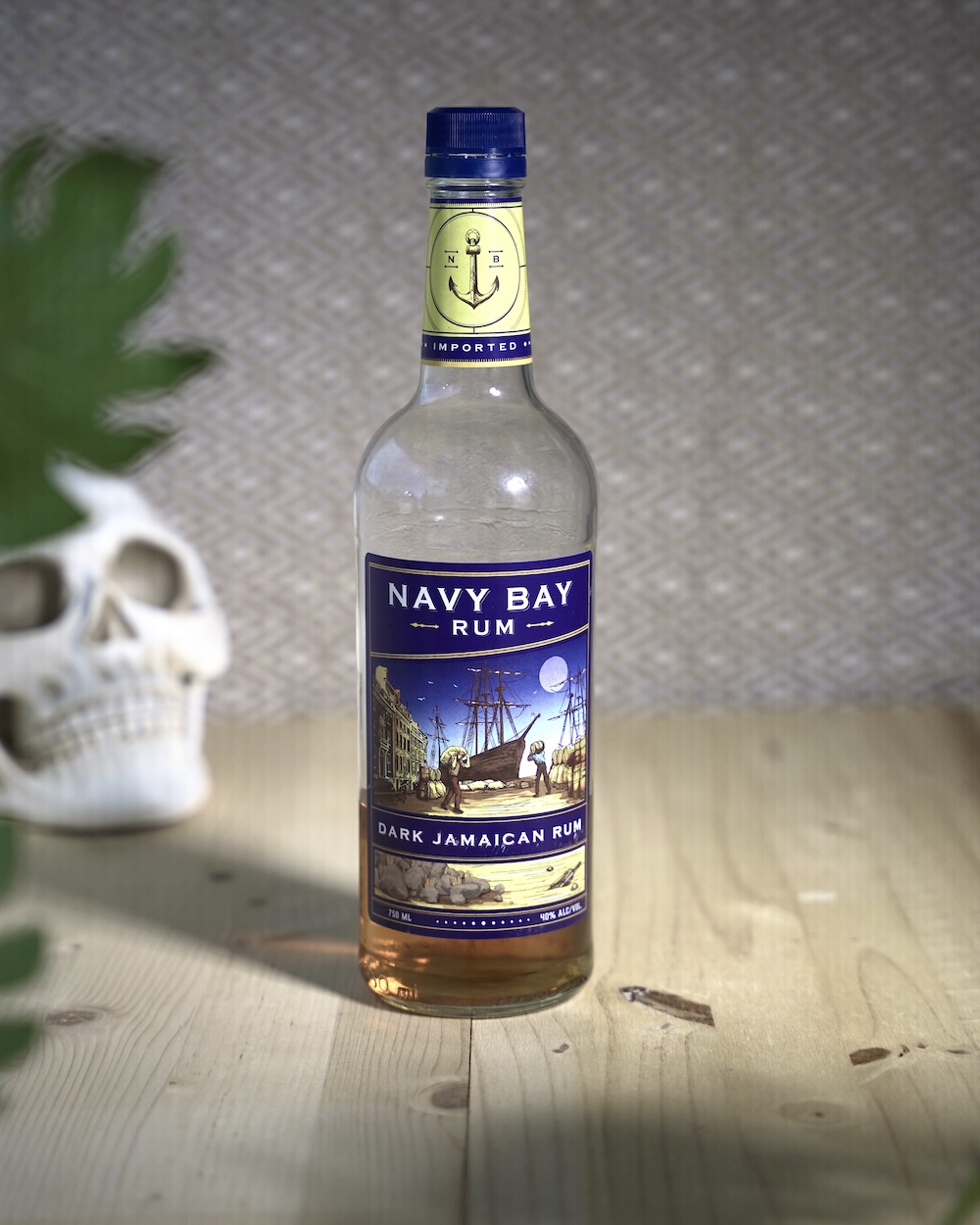
This molasses pot column blend from an unknown Jamaican distillery gave us notes of solvent and pineapple, with hints of banana, brown sugar, tea, and oak. We thought it was pretty good as a neat sipper (7.2/10) and great as a mixer (8.5/10).

This pot column blend from multiple Jamaican distilleries gave us notes of banana and baking spice, with hints of chocolate, pie crust, coffee, and rubber. We thought it was okay as a neat sipper (6.7/10) but great as a mixer (8.6/10).
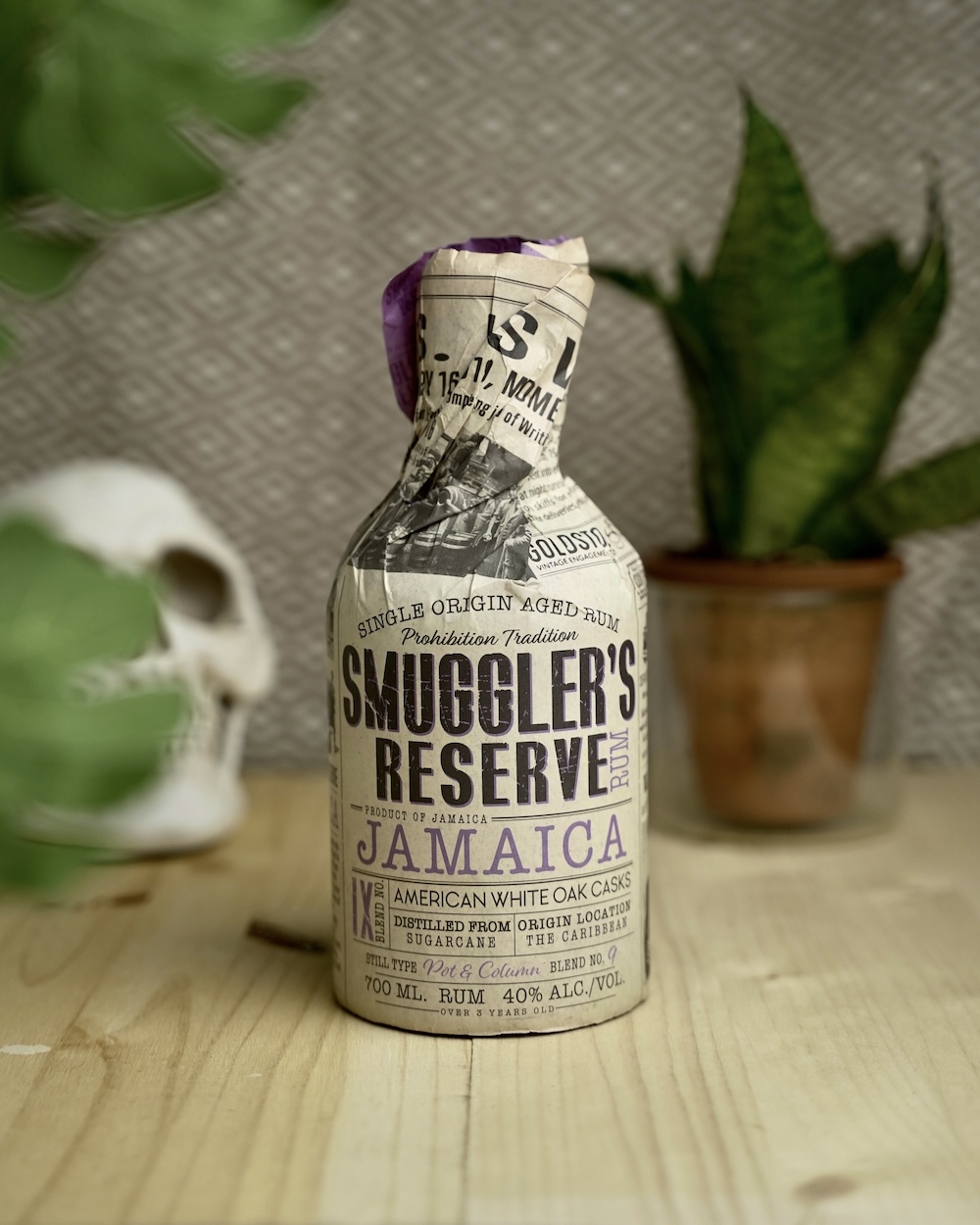
This pot column blend from multiple Jamaican distilleries gave us notes of tropical fruit and butterscotch, with subtler hints of solvent, strawberry, pineapple, coconut, and baking spice. We thought it was pretty good as a neat sipper (7.0/10) and great as a mixer (8.1/10).
/10
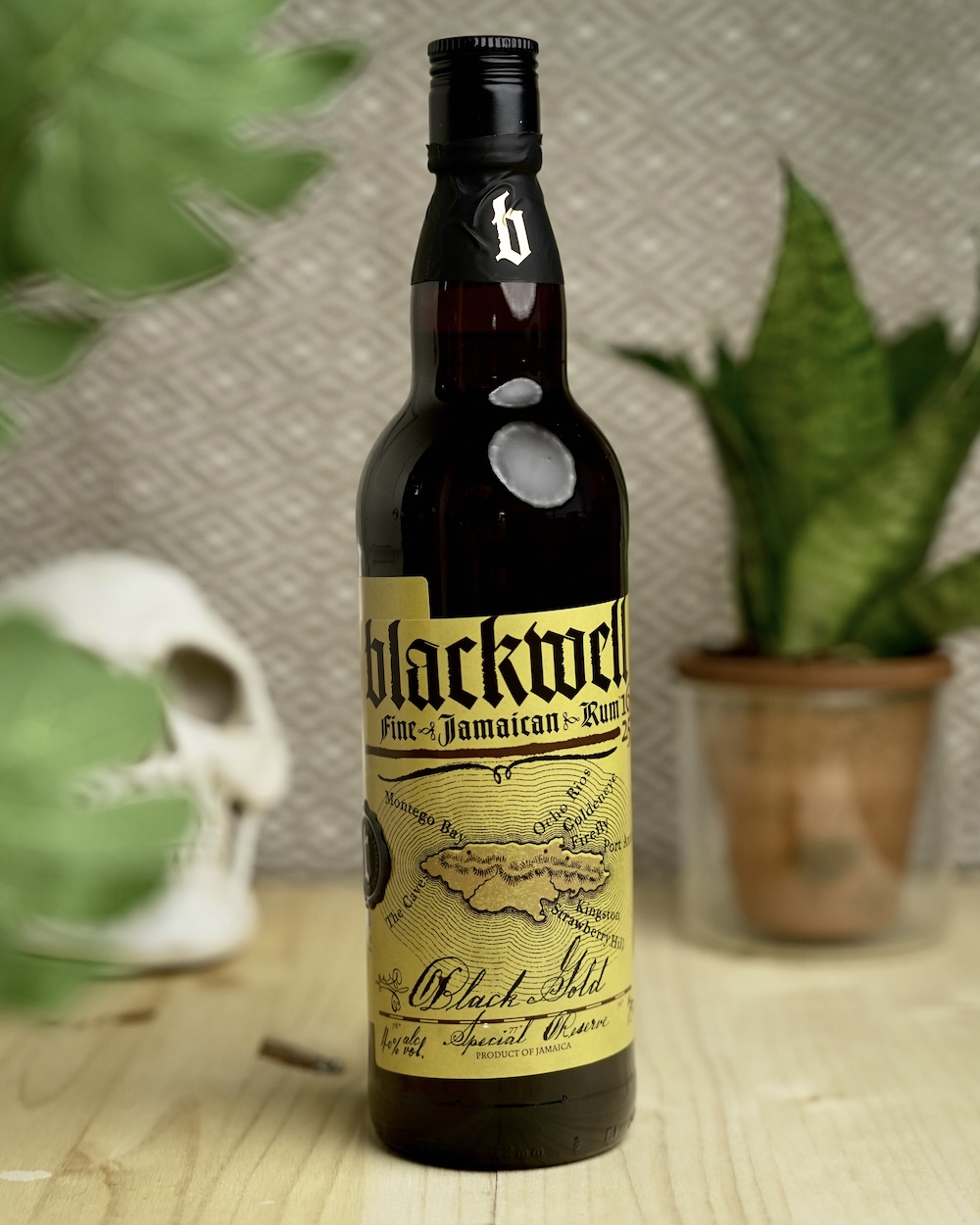
This pot column blend from Appleton Estate in Jamaica gave us strong notes of caramel and chocolate, with hints of vanilla, brown sugar, ethanol, bitterness, and molasses. We thought it was okay as a neat sipper (6.8/10) and pretty good as a mixer (7.8/10).

This young, pot still rum distilled by Worthy Park gave us notes of overripe banana with hints of butter, pear, flower shop, cinnamon, and ginger. We thought it was okay as a neat sipper (6.7/10) and pretty good as a mixer (7.4/10).

This pot column blend from Appleton Estate in Jamaican gave us strong notes of brown sugar and wood, with subtler hints of caramel, cinnamon, pineapple, orange peel and glue. We thought it was okay as a neat sipper (6.5/10) and great as a mixer (8.5/10).
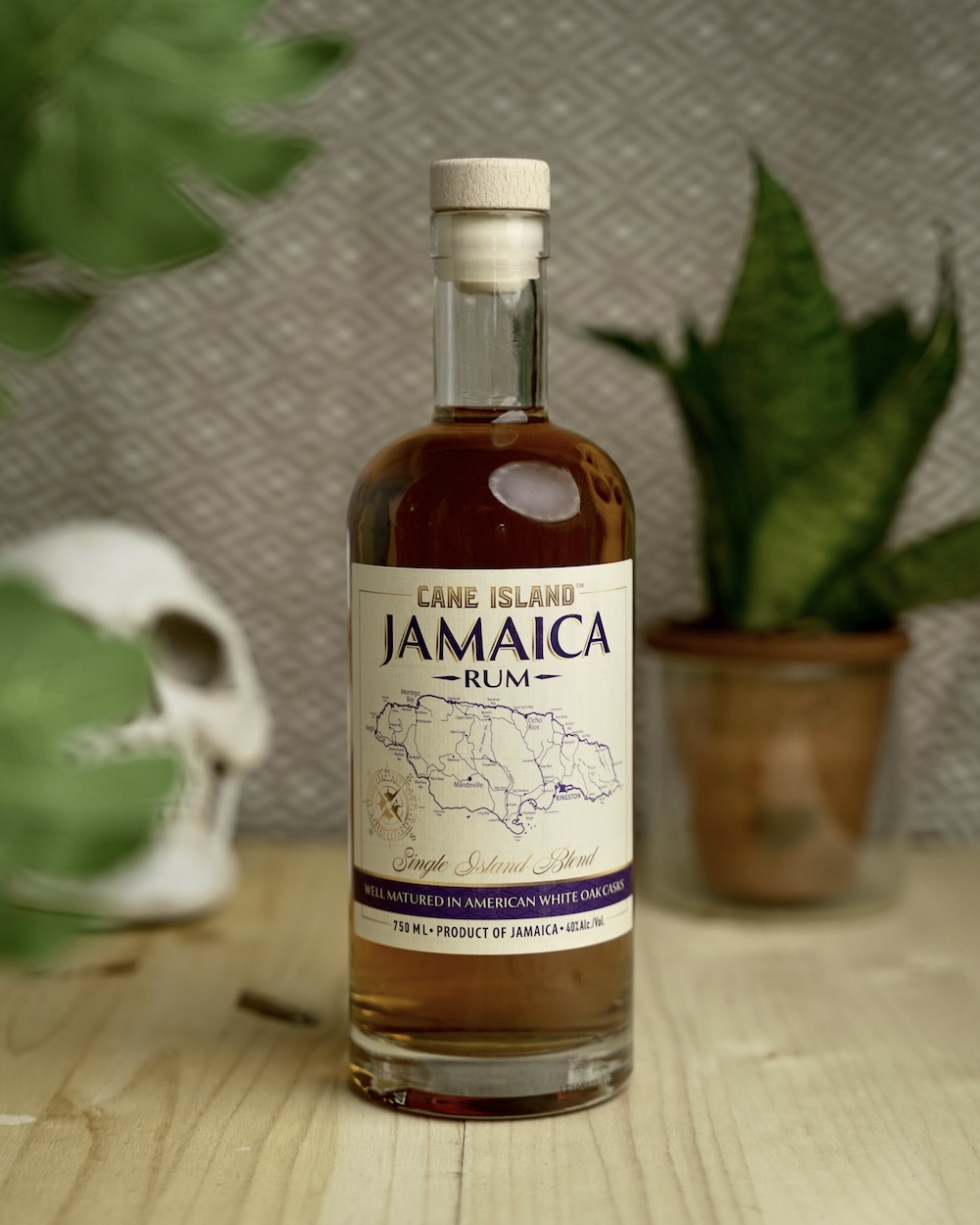
This pot column blend from multiple distilleries in Jamaica gave us notes of molasses and solvent, with subtler hints of pineapple, green apple, caramel, banana bread and vanilla. We thought it was okay as a neat sipper (6.9/10) and great as a mixer (8.0/10).
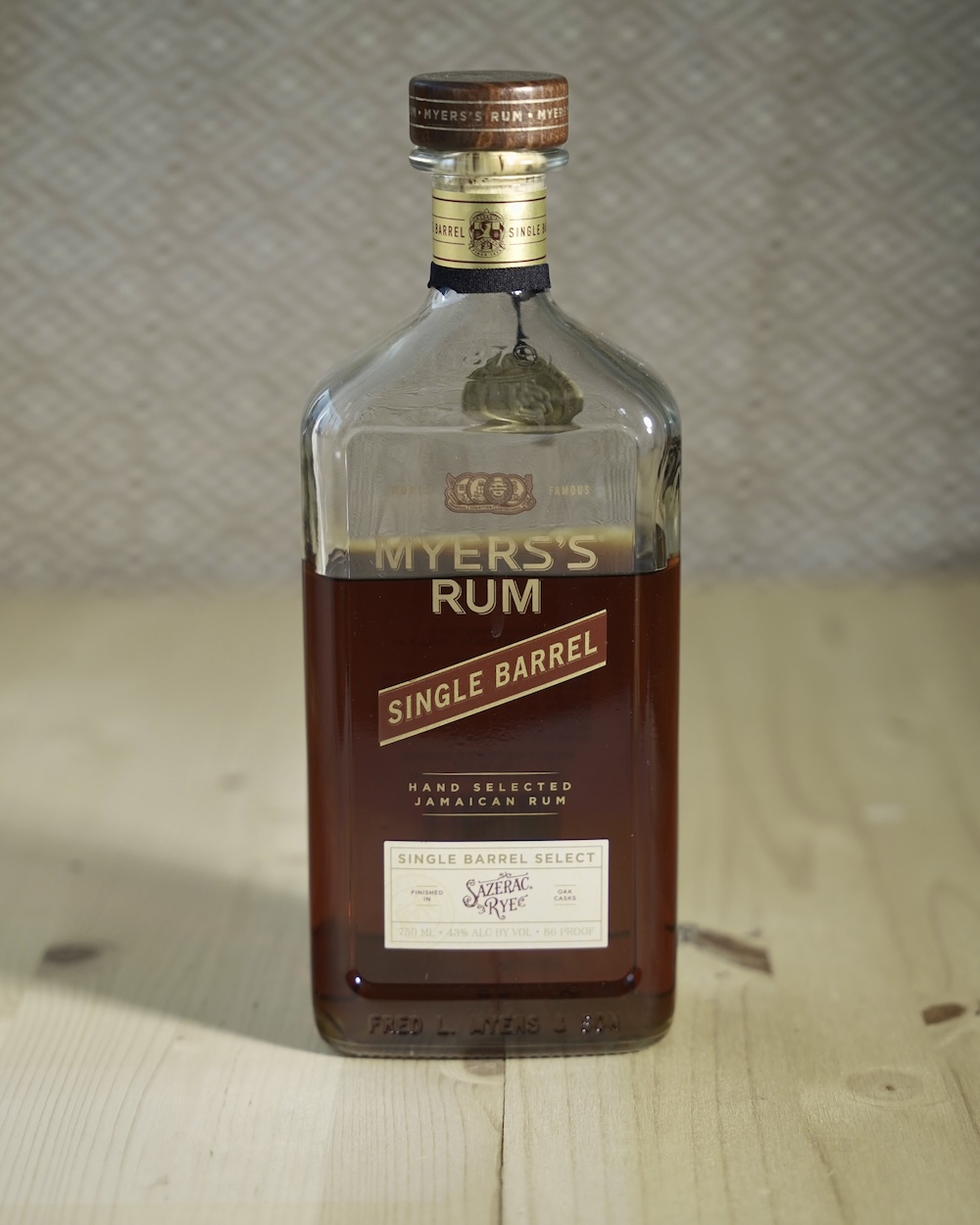
This molasses based pot column blend from multiple Jamaican distilleries gave us notes of spices and toasted sugar, with hints of cola, banana, maple, pepper and coffee. We thought it was pretty good as a neat sipper (7.3/10) and great as a mixer (8.3/10).

This pot still rum from multiple Jamaican distilleries gave us strong notes of solvent and smoke, with hints of caramel, banana, brine, ginger and medicine. We thought it was pretty good as a neat sipper (7.3/10) and pretty good as a mixer (7.7/10).
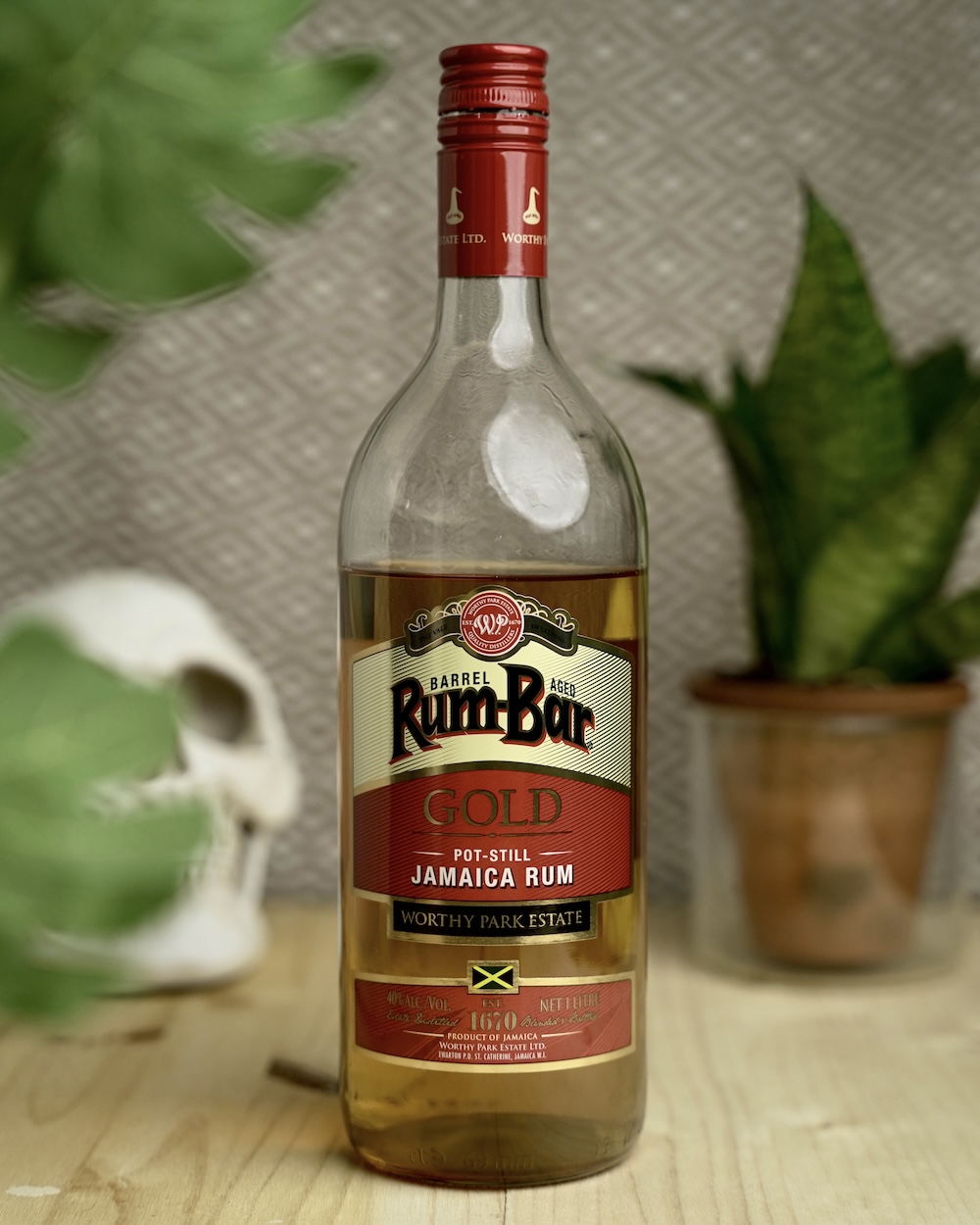
This pot still rum from Worthy Park in Jamaica gave us strong notes of banana, with subtler hints of cereal, apple, varnish, allspice, coconut, toffee, and oak. We thought it was good as a neat sipper (7.3/10) and great as a mixer (8.1/10).
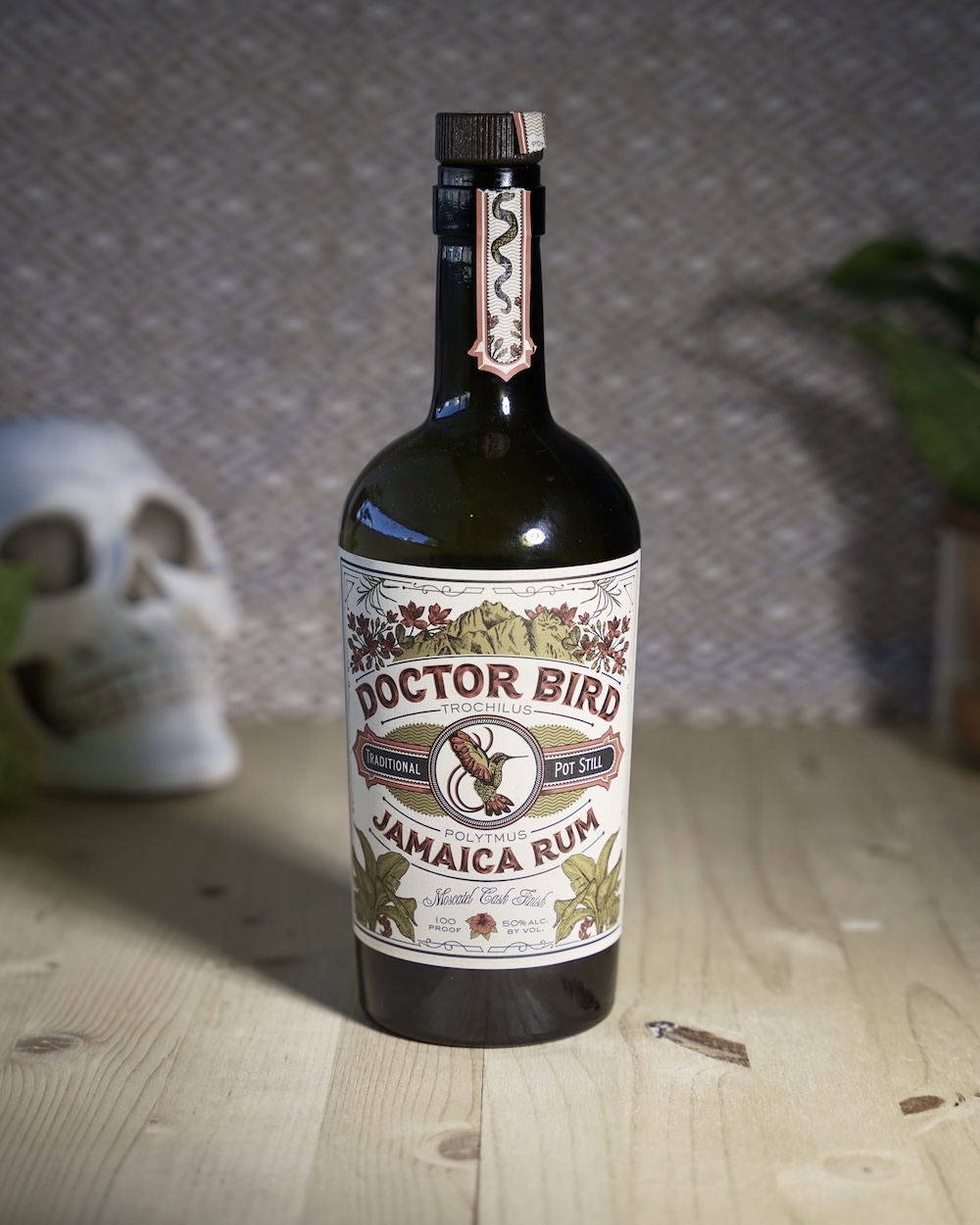
This pot still rum distilled at Worthy Park in Jamaica and finished in Moscatel casks in Michigan gave us note of overripe banana and pineapple. We thought it was good as a neat sipper (7.0/10) and even better as a mixer (7.9/10).
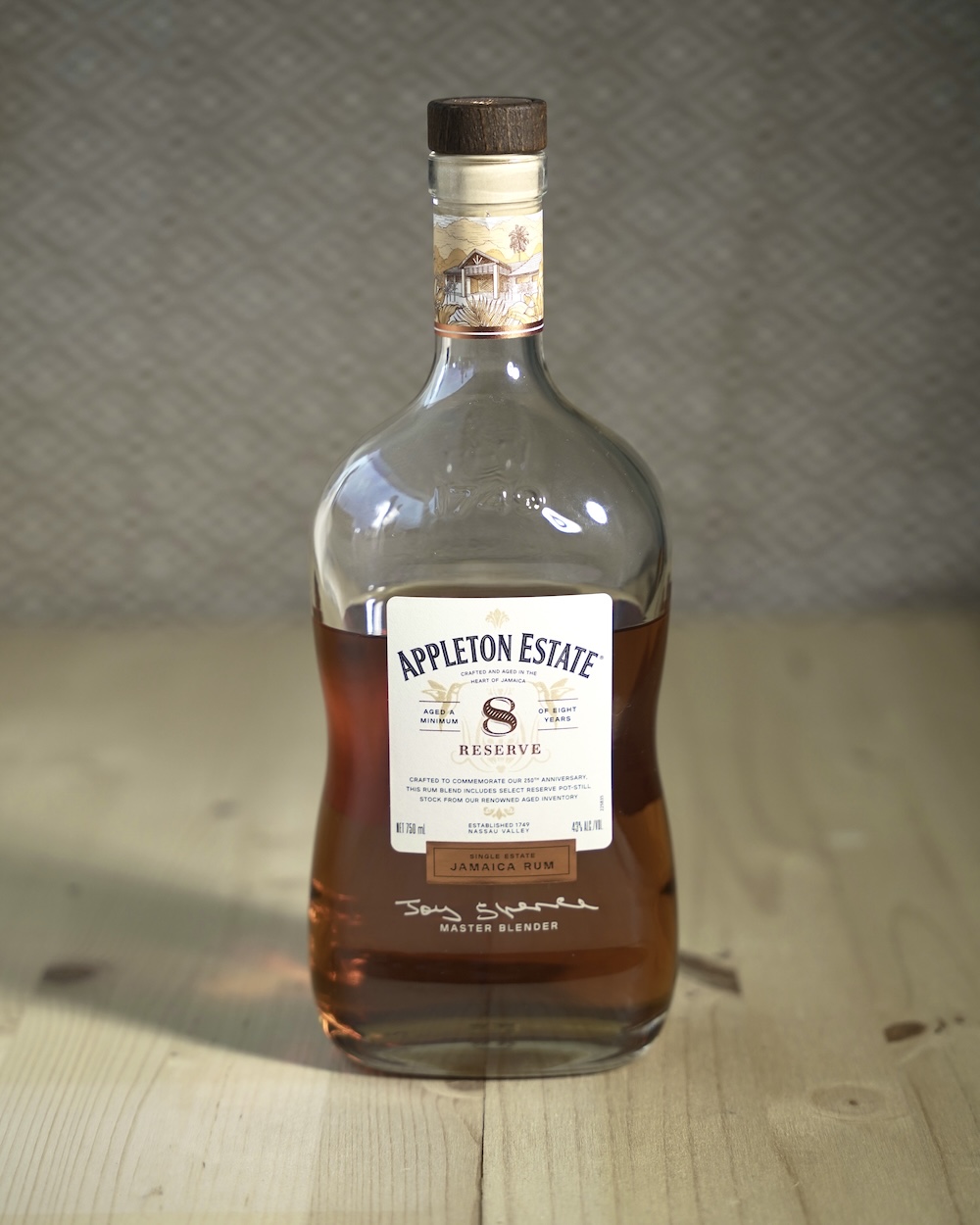
This molasses based pot column blend from Appleton Estate gave us notes of oak and toasted sugar, with notes of caramel, molasses, botanicals, orange peel, cinnamon, and vanilla. This was one of our favorites, and we thought it was pretty good as a neat sipper (7.3/10) and great as a mixer (8.4/10).
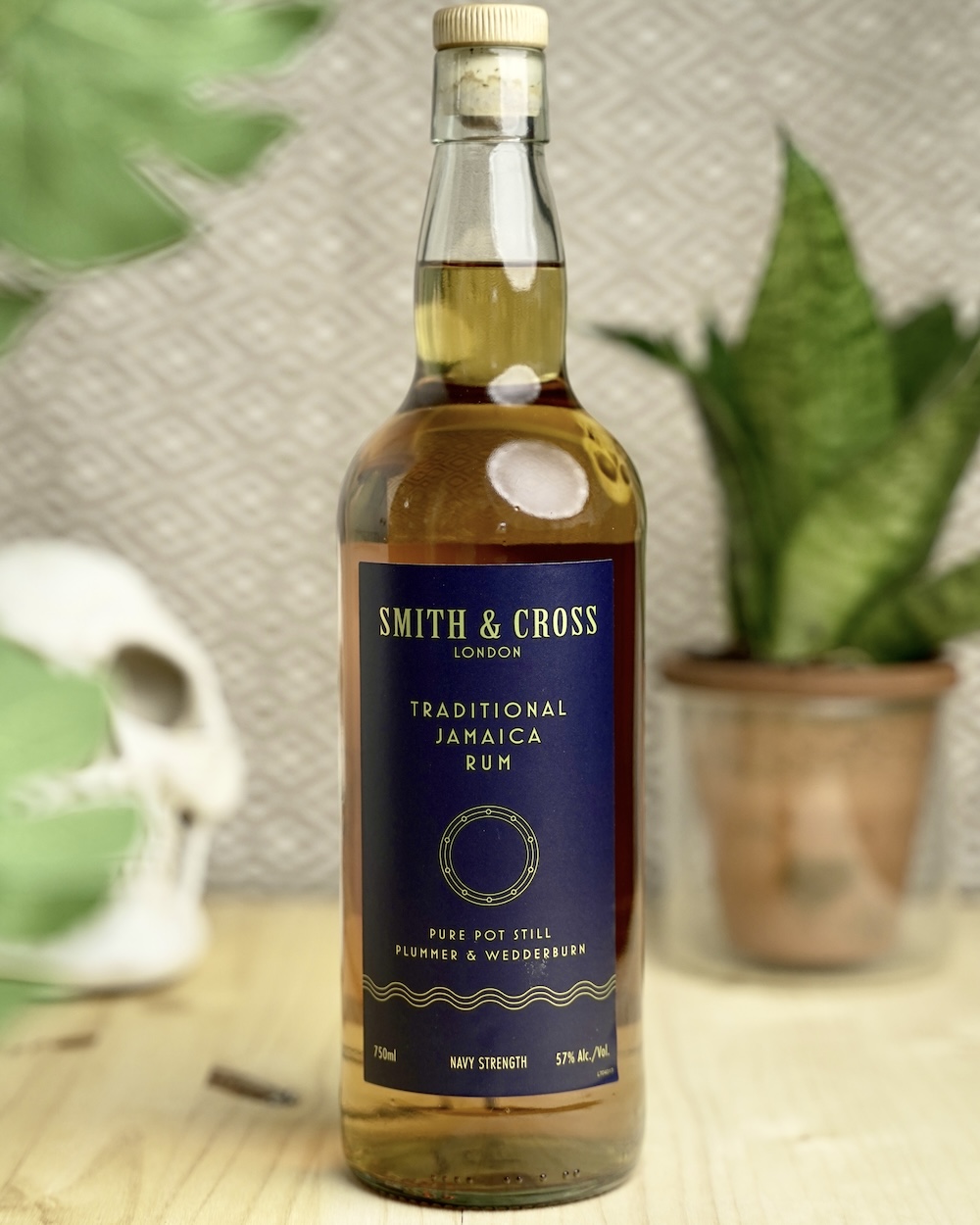
This iconic pot still rum from multiple Jamaican distilleries gave us strong notes of pineapple and solvent, with subtler hints of acetic acid, berry, smoke, banana, rubber, flower, and ginger. We thought it was pretty good as a neat sipper (7.8/10) and great as a mixer (8.9/10).
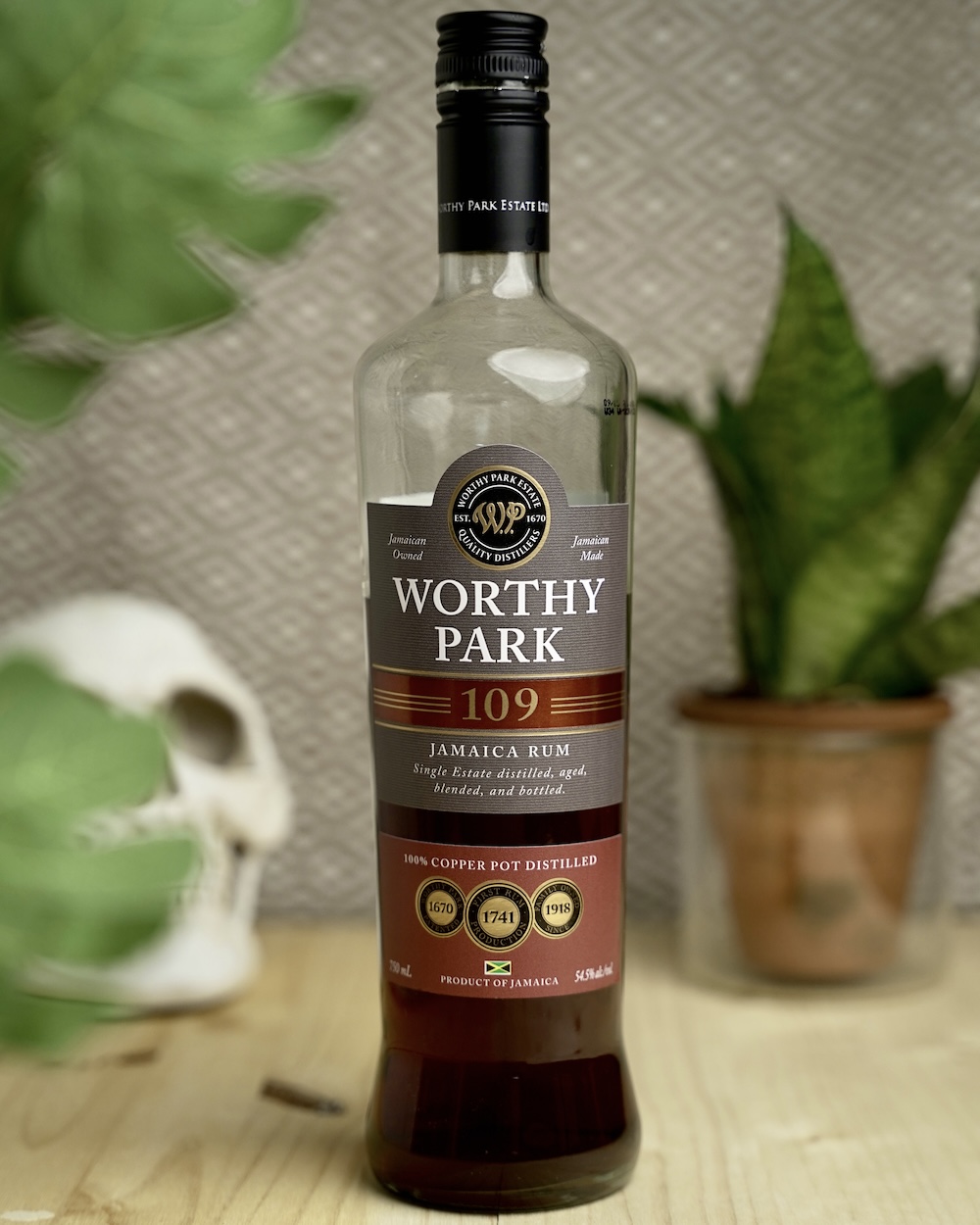
This pot still rum from Worthy Park Estate in Jamaica gave us strong notes of toasted sugar and banana, with subtler hints of oak, orange, pineapple, allspice, and vanilla. We thought it was good as a neat sipper (7.8/10) and great as a mixer (8.1/10).
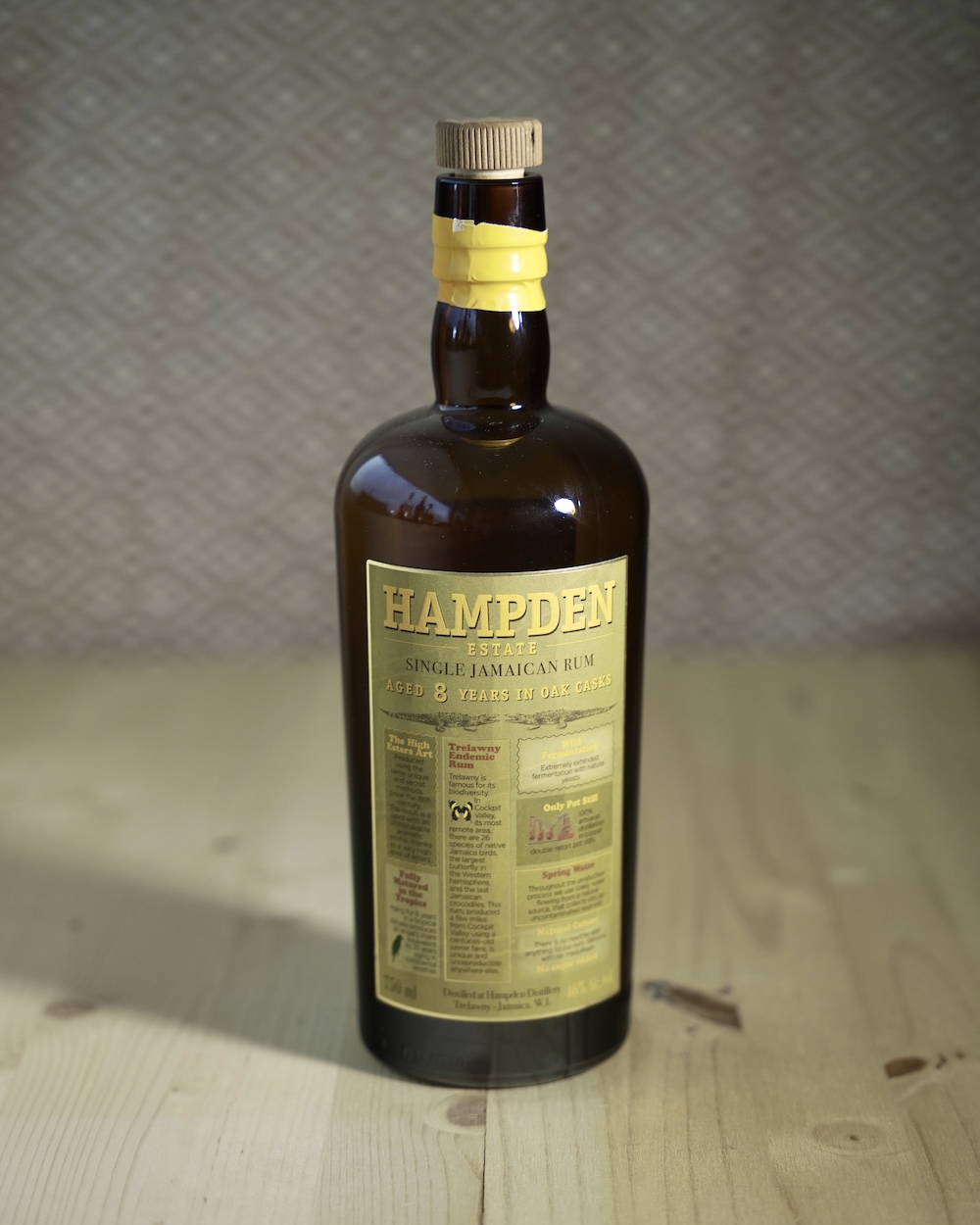
This molasses based pot still rum from Hampden Estate gave us notes of pineapple, oak and solvent, with hints of coconut, banana, pepper, ginger, mango and dried stone fruit. We thought it was great as a neat sipper (8.1/10) and even better as a mixer (8.6/10).
Because of course we need a little data analysis. Our average bottle cost around $31, our average rating was 7.0, and our average minimum age was 1.6 years (though this is pulled down by rums without an age statement). Our most expensive rum, Hampden 8, clocked in at $59.99, and our least expensive, Navy Bay cost only $19.99. Unsurprisingly there’s a positive relationship between price and overall rating, but what is interesting is how weak the correlation is at the very high end of the quality spectrum; while our highest rated rum, Hampden 8, was also our most expensive, our second highest rated rum, Worthy Park 109 was, at $27.99, cheaper than our average bottle.
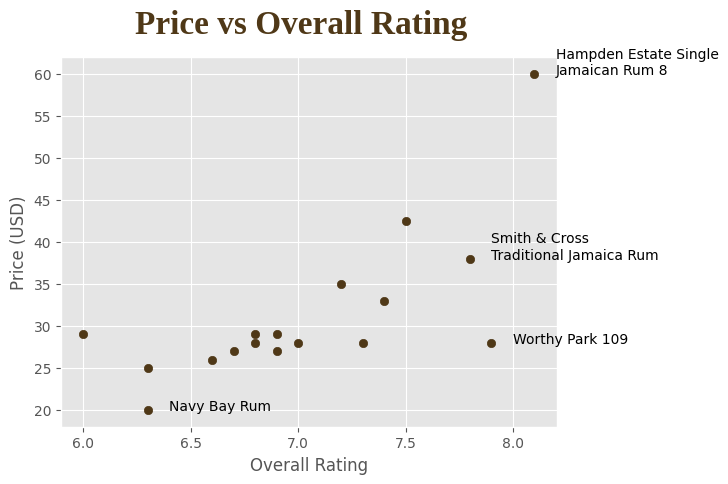
I was also curious to see how our blind ratings stacked up to the aggregated community rating on RumX. In general our ratings were pretty similar; the average Rum X score was 7.1, and the average blind neat score we assigned was 7.0. Our scores were positively correlated, with an R2 of 0.48. The most “underrated rum” (i.e., the rum where our blind score exceeded the RumX rating the most) was Myers’s Original Dark Rum, and the most “overrated rum” was Doctor Bird (this kind of hurts to see, because I think Doctor Bird is a really delightful rum and don’t think it’s overrated consciously, but hey, the blind data is what it is).
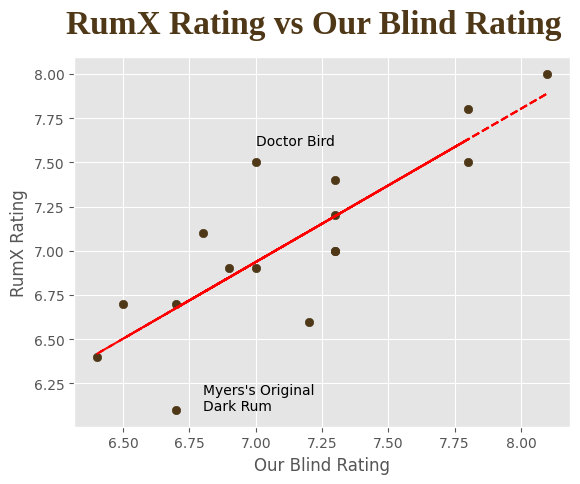
In all honesty, there are very few rums on this list you could go wrong with. Most of them are both flavorful and approachable. Some provide better value for money, and many serve particular roles, but I’d particularly recommend everything that clocked in at 7.5 and above.
Appleton Estate Reserve 8 is an overall great expression from Appleton, and a really gentle introduction to Jamaican Rum. While it may not fully deliver Jamaican fruity-funkiness, it’s a great rum to sip neat, or an all-around team player in a cocktail.
Smith & Cross Traditional Jamaica Rum is an icon of the rum world, and for good reason. It’s insanely flavorful, and while it may be a bit aggressive to sip neat for some, any cocktail recipe that calls for “Aged Jamaican Rum” or “Gold Jamaican Rum” should be honored to be instantiated with Smith & Cross.
Worthy Park 109 may have been the rum that, out of the entire lineup, delighted me the most. It’s simultaneously deeply rich and boldly fruity. It’s not really positioned as an “elevated” sipping spirit, but specifically in the “black rum” category where you’re looking for deep color and a bit of chewiness, WP 109 is 100% the way to go. The cherry on top is that it’s an incredibly good deal.
Hampden Estate Single Jamaican Rum 8 has all of the flavor of Smith & Cross, and all of the refinement and gentility of Appleton Estate Reserve 8. The main drawback is that (at least in my market in Seattle) it’s pretty damn expensive, but beyond that I have no notes. It’s bold, fruity, complex, and a stellar guest in any snifter or cocktail.
Neat RatingMixer RatingOverall Rating:
Neat RatingMixer RatingOverall Rating:
Neat RatingMixer RatingOverall Rating:
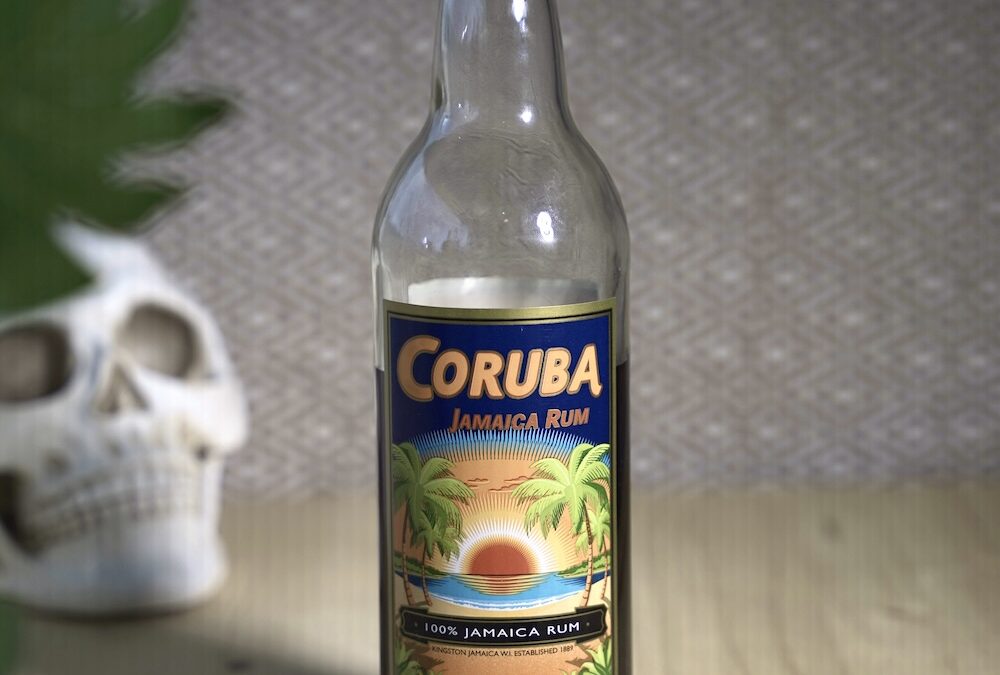
Neat Rating
Mixer Rating
Overall Rating: